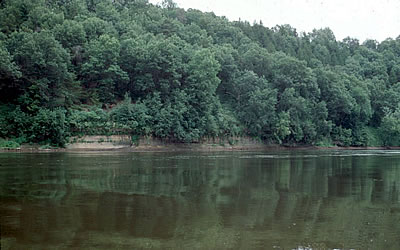Lower Chippewa River

Site Description
This area encompasses the final 40 miles of Wisconsin’s second-largest river before it meets the Mississippi. The floodplain is flat and meandering with many oxbows and bayous, and contains the largest contiguous floodplain forest in the entire upper Midwest. Prairie is found on the sand and gravel terraces, while the surrounding hills harbor goat prairie and savanna. Other vegetation types present include shallow marsh, willow thickets, cool season grasses, and scattered ponds and conifers.
Ornithological Importance
This site supports significant breeding populations for numerous high priority species, including red-shouldered hawk, Kentucky warbler, and prothonotary warbler. It is considered a cerulean warbler core habitat, with up to 10,000 acres of suitable habitat available for this species. The site is a concentration area for waterfowl, with numbers exceeding 25,000 on many days in the fall. Several hundred waterbirds, including herons, egrets, and bitterns, also concentrate here in late summer. The site is an exceptional concentration area for migratory landbirds, particularly in the spring, with numbers conservatively estimated at 100,000 in a single day. This site supports a tremendous diversity of rare and high-priority species and is considered a critical IBA.
Read more about conservation planning for the Lower Chippewa River IBA.
Photo Credit: Eric Epstein
